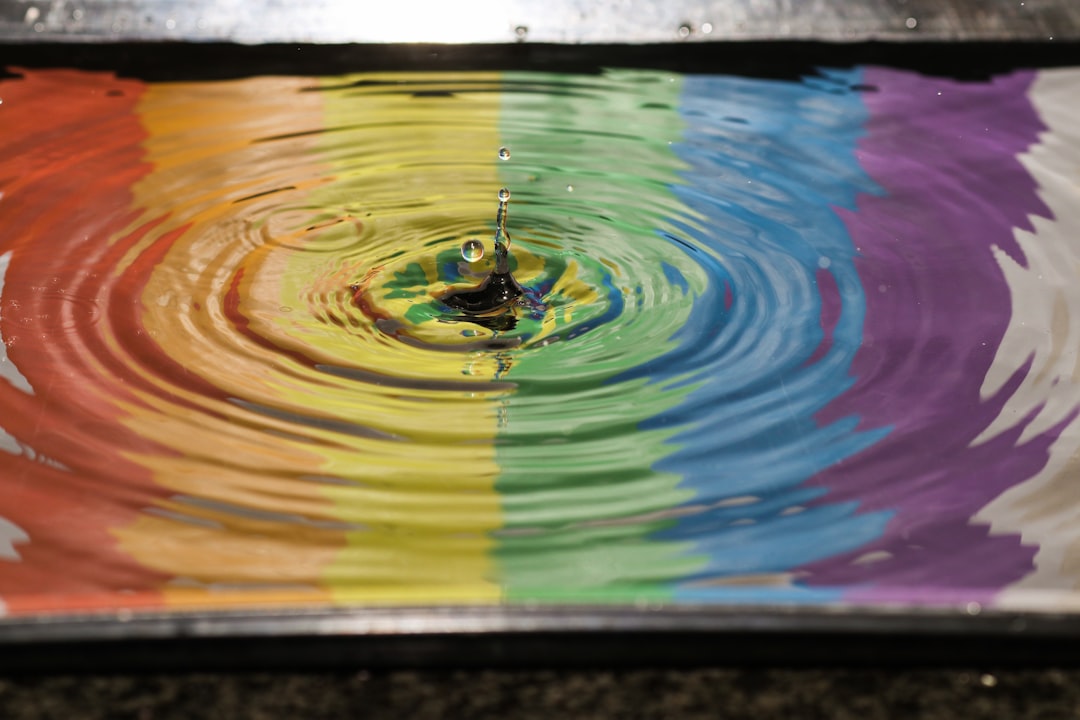What is it about?
Looking for a flow pattern optimal for the growth of a culture in vortex bioreactors, we found a curious structure, which mimics strong vortices observed in the atmosphere and the ocean and can be referred to as “vortex domino”. This experimental study reveals a spectacular and important phenomenon—double vortex breakdown—in a swirling flow of two immiscible fluids. The result is a meridional flow structure that resembles a one-one domino tile (hence the name "vortex domino"). A suitable model of a bioreactor is a vertical cylindrical container filled with two immiscible fluids, the movements of which are caused by the rotation of the upper disk. Such a flow can provide fine, gentle, and nonintrusive mixing of species in chemical and biological reactors. Simple geometry and isolation from external disturbances make this model very convenient for experimental and numerical studies. The rotating lid drives circulation of two immiscible fluids in a sealed vertical cylinder. As the rotation speed exceeds a threshold, an important and paradoxical experimental fact is that a spiral flow of a lighter upper fluid converging above the interface creates a diverging (!) spiral motion of the denser lower fluid under the interface. As the rotation speed further increases, the tornado-like motion develops in both fluid and a dual vortex breakdown occurs.
Featured Image

Photo by Darren Nunis on Unsplash
Why is it important?
During experimental studies, different liquids (alcohol, water, glycerin, and mixtures thereof) were used with their density difference from 0.5% to 30% with repeating results of the evolution of the vortex motion. In an aerial-vortex bioreactor, a similar movement is observed where the air vortex drives the circulation of a working liquid. The difference in densities between air and liquid in this case is more than 1000 times. This paradoxical phenomenon indicates that the radial velocity jumps at the interface, i.e., there is a slip between the lower and upper fluids. Unlike the known slip mechanisms (in a rarefied gas, on a rough surface, or created by surfactants), in this new case, sliding is caused by the centrifugal force. The detected slip is of fundamental importance, since all calculations of two-fluid rotating flows, obtained under the condition of velocity continuity at the interface, now require revision. In addition to technological processes, vortex flows of immiscible fluids occur in nature. For example, the stable stratification of fluids with different density and salinity occurs at the confluence of the waters of the North and Baltic seas, as well as the Mediterranean Sea and Atlantic Ocean, where vortices can emerge suddenly in the eye of the observer, similarly to that in our case.
Perspectives
The results obtained can be of interest: (a) For technological applications where the observed multiplicity of cells and their arrangement in the "vortex domino" enhance the mixing and saturation of the working medium with nutrients and oxygen, which is beneficial for biological processes. Our research indicates how to achieve this: the culture is placed in a lower liquid, which is driven by an upper fluid (liquid or gas), propelled by the rotation of the lid. The culture is not destroyed because it does not touch the rotating solid parts of the reactor. (b) For fundamental research, since the discovered effect of centrifugal slip requires a revision of the results of calculations of two-fluid rotating flows, obtained under the condition of continuity of velocity and stresses at the interface between the fluids. (c) For modeling elements of the atmosphere-ocean system, since it leads to the formation (miniature in the laboratory) of a two-story tornado and helps explain the formation of vortex motion at the interfaces between two media of different densities (for example, seawater of different salinity or gas conglomerates of different densities in space).
Igor Naumov
Kutateladze Institute of Thermophysics SB RAS
Read the Original
This page is a summary of: Dual vortex breakdown in a two-fluid confined flow, Physics of Fluids, June 2020, American Institute of Physics,
DOI: 10.1063/5.0012156.
You can read the full text:
Contributors
The following have contributed to this page










